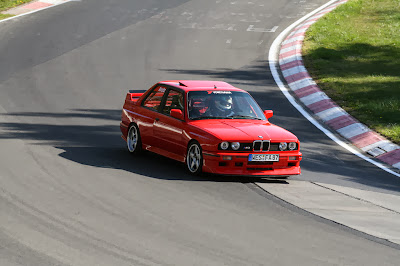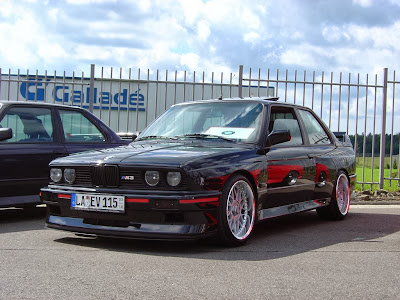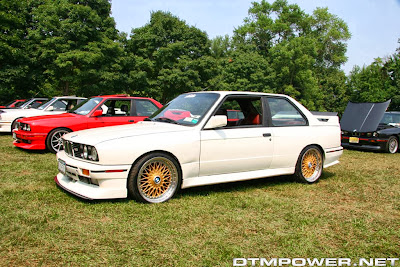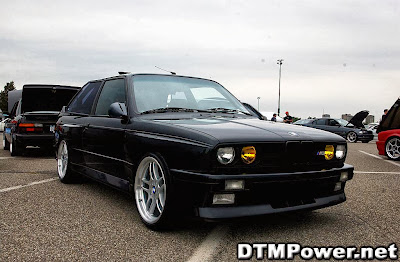BMW E30 - Sports car
Four-doors and four-speed automatic transmission options were offered on the three series in 1985. Sales for the BMW E30 were dwindling so the decision was made to remove it from the line-up at the close of 1986. 1986 also saw the addition of antilock four-wheel disc brakes and the BMW E30 two-door 325es.
BMW E30 engine
1987 BMW E30 was a big year for the three-series with the addition of the 325i and 325is models, and a convertible option dubbed the 325ic. The BMW E30 325is was a true sports model bringing back a heritage that had been last seen in the 2002ti. With 168 horsepower and nearly identical torque, it was the most powerful three-series up to that point. The BMW E30 zero-to-sixty mile-per-hour mark was achieved in just 7.4 seconds and the quarter mile in 15.6 seconds. With the large disc brakes on all four corners and sturdy suspension, the performance was amazing.
BMW E30 in red
In 1988 safety and performance were taken to a whole new level with the introduction of the BMW E30 all-wheel-drive 325ix. By the close of 1991 a replacement for the 3 Series BMW E30 was needed. The BMW E30 had expanded the model lineup to include sedans, coupes, and convertibles with varying engine and transmission options. Replacing the BMW E30 would be tricky, since the company relied upon it for their 'bread-and-butter'.
BMW E30 sports coupe
The replacement came in the form of the 1992 three-series E36. The E36 was the first major departure from the design, styling, and proportions of the BMW 2002. When comparing the E36 with the BMW E30, it was larger, wider, and slightly bigger in every dimension. The BMW E30 windshield was slightly slanted, rather than the straight-up design of the previous models.
BMW E30 Body Kit
The BMW E30 aerodynamics further improved and as a side-benefit, reduced road and wind noise. With the increase in vehicle size, the interior room increased for passengers and the engine compartment could accommodate larger engines. The BMW E30 weight distribution was 50/50, a technique that improves a vehicle performance and handling. The BMW E30 front suspension was still MacPherson strut design but the rear suspension received a new 'Z-axle' featuring a multilink system.
BMW E30 side view
The rack-and-pinion steering, disc brakes and ABS were carried over from the BMW E30. Under the hood lurked a new 24-valve dual-overhead-cam aluminum six-cylinder engine capable of producing 189 horsepower. When equipped with a five-speed transmission, the BMW E30 325i could propel from zero-to-sixty in 6.9 seconds.
BMW E30 news
In 1996 the 325i and 325is received a new 2.8-liter inline six rated at 190 horsepower. In 1998 the 323i convertible and 323is coupe was outfitted with a 2.5-liter M52 engine that produced 168 horsepower. In 1999 the E46 3-series was introduced. The first versions offered were the BMW E30 323i and 328i four-door sedans. The BMW E30 body had undergone moderate changes such as a new front end, a rounder roofline, wider wheel arches, and updated headlights. The BMW E30 vehicles sat atop a wider wheelbase and the length had increased.







Няма коментари:
Публикуване на коментар